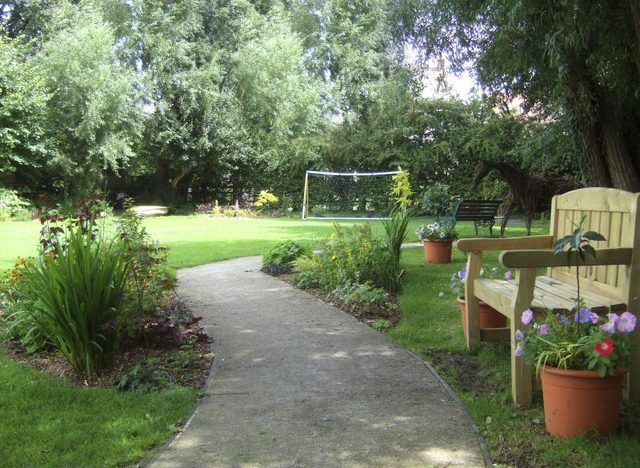Bulbs
Flower Basics
Flower Beds & Specialty Gardens
Flower Garden
Garden Furniture
Garden Gnomes
Garden Seeds
Garden Sheds
Garden Statues
Garden Tools & Supplies
Gardening Basics
Green & Organic
Groundcovers & Vines
Growing Annuals
Growing Basil
Growing Beans
Growing Berries
Growing Blueberries
Growing Cactus
Growing Corn
Growing Cotton
Growing Edibles
Growing Flowers
Growing Garlic
Growing Grapes
Growing Grass
Growing Herbs
Growing Jasmine
Growing Mint
Growing Mushrooms
Orchids
Growing Peanuts
Growing Perennials
Growing Plants
Growing Rosemary
Growing Roses
Growing Strawberries
Growing Sunflowers
Growing Thyme
Growing Tomatoes
Growing Tulips
Growing Vegetables
Herb Basics
Herb Garden
Indoor Growing
Landscaping Basics
Landscaping Patios
Landscaping Plants
Landscaping Shrubs
Landscaping Trees
Landscaping Walks & Pathways
Lawn Basics
Lawn Maintenance
Lawn Mowers
Lawn Ornaments
Lawn Planting
Lawn Tools
Outdoor Growing
Overall Landscape Planning
Pests, Weeds & Problems
Plant Basics
Rock Garden
Rose Garden
Shrubs
Soil
Specialty Gardens
Trees
Vegetable Garden
Yard Maintenance
What Is the Best Grass Seed for Shade?
What Is the Best Grass Seed for Shade?. As long as the area gets at least 4 hours of sun a day, there are a few types of grass that can grow in the shade. Seed mixes of cool-season grasses selected for shade are readily available and should be sown in the early fall no later than mid-September. Finding shade-tolerant warm-season grasses is more...

As long as the area gets at least 4 hours of sun a day, there are a few types of grass that can grow in the shade. Seed mixes of cool-season grasses selected for shade are readily available and should be sown in the early fall no later than mid-September. Finding shade-tolerant warm-season grasses is more challenging, but not impossible. These should be seeded in late spring or early summer.
Cool-Season Grasses
The most shade-tolerant grasses for cool season lawns are tall fescue (Festuca arundinacea) and fine fescues (Festuca sp.). These grasses are often sold in seed mixes for shade that include multiple fescue species. Other cool season grasses perform poorly in shade, but Kentucky bluegrass (Poa pratensis) may form up to 20 percent of a shade mix to improve the appearance of the lawn. All these grasses are hardy in U.S. Department of Agriculture plant hardiness zones 2 through 7
Warm-Season Grasses
St. Augustine grass (Stenotaphrum secundatum) is the most shade-tolerant warm-season grass, but it is rarely available from seed. It has a narrow hardiness range, only growing in USDA zones 8 through 10. Zoysiagrass (Zoysia sp) has some shade tolerance, particularly the cultivars "Belaire," "Cavalier," "Diamond," and "El Toro." Zoysia cultivars are hardy in USDA zones 6 through 9. They are typically propagated from sod, plugs or sprigs, but seed is available. Once established, zoysiagrass is heat, drought, and traffic resistant.
Seeding a New Lawn
Prepare soil by covering the area in a 2- to 3-inch layer of organic matter, like well-composted manure, and tilling to a depth of 6 to 8 inches. Sow grass seed using a rotary or drop spreader. Tree roots will compete with grasses for nutrients and soil space, so keep the space in a 2- to 4-foot diameter around trees grass free. After seeding, rake the seed to lightly cover it, then mulch with 1 bale of straw per 1,000 square feet for warm-season grass and 1 to 2 bales for cool-season grass. Water often enough for the first 15 to 20 days to keep the top 1/2 inch of the soil moist.
Keeping Shaded Grass Healthy
To help keep the grass healthy, mow at least 1 inch higher than normal so more leaf surface area is available to take in light. Minimize problems from nearby trees by trimming until the lowest branches are at least 6 feet above the ground. Shaded grass should be fertilized sparingly by applying no more than 2 pounds of actual nitrogen per 1,000 square feet each year. A dry lawn food with an N-P-K ratio of 20-0-10 contains 20 percent nitrogen, so it can be applied at the recommended rate of 3 pounds per 1,000 square feet up to three times a year.